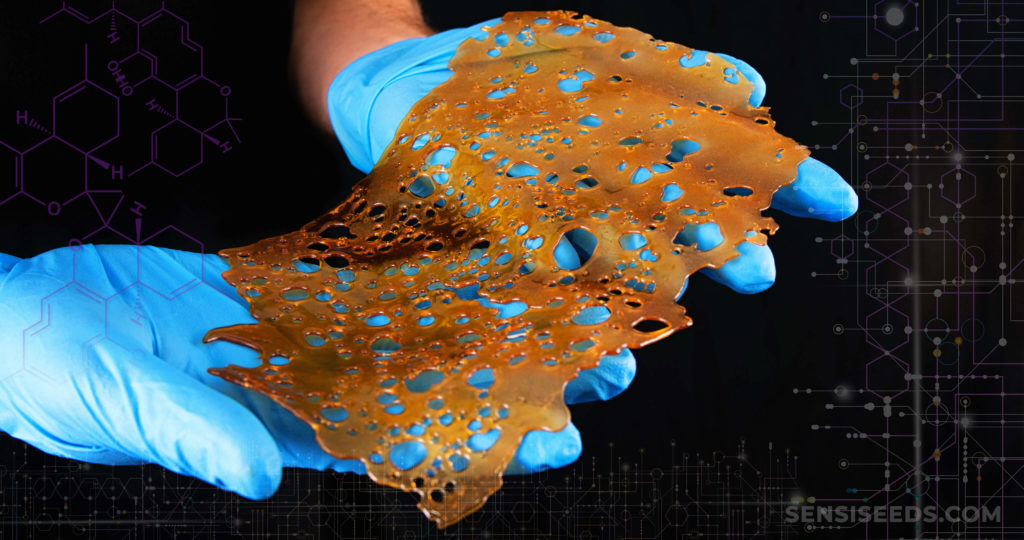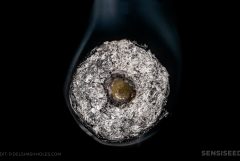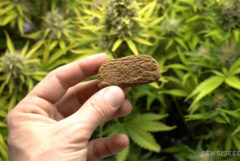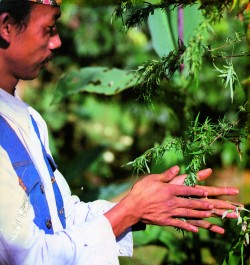Cannabis has been safely used for centuries by countless cultures all over the world. Cannabis extracts, which are mainly concentrations of the resin glands from its flowering tops, are often referred to as Hashish.
Cannabis has been safely used for centuries by countless cultures all over the world. Cannabis extracts, which are mainly concentrations of the resin glands from its flowering tops, are often referred to as Hashish.
A LITTLE HISTORY
Breaking up a bud and smoking a joint or packing a bowl is the traditional way that Americans smoke Cannabis, but the extracted resins of Cannabis have been popular throughout the world for thousands of years. Humans long ago realized that while smoking the flower was nice, separating and concentrating the resins found on the flowers and leaves deliver the most desirable effect. What the media is now calling “Dabs”, is really just 21st century Hashish.
Initially hashish aficionados used silk screens, then moved on to mechanical separation with precise sieving sizes so that they could separate the resin glands by specific micron size. In the early 1990s, the concept of using ice water to separate the resin from the flowers came onto the scene and that became known as water-hash, or if it was really good, bubble-hash, because when you would put it in your pipe to smoke it, it would literally bubble, not because of the water, but because the oils were so pure.
Water, like butane, is not something you want mixed in with what you’re smoking or vaporizing and if the resin that is separated with water is not dried properly, it can mold easily, and mold is yet another substance you do not want mixed in with what you are smoking or vaping.
On May 1st 1999, an author named Indra put an article up on erowid.com titled The Boffo Butane-PVC Hash Oil Extractor and fortunately for the culture of Cannabis, some enterprising and brave Cannabis growers and amateur researchers, took on the task of perfecting this new extraction technique. Almost 15 years later butane hash oil or BHO or under its many names, wax, budder, erl or simply oil; is all over the news and bringing right-wing paranoia back into the Cannabis controversy. Since gas extraction became part of the hashish conversation and in an effort to make a cleaner product, hash makers started experimenting with carbon dioxide to extract resins with varying degrees of results.
MEDICAL USE OF CANNABINOIDS
I am a chronic pain patient who uses Cannabis to quell the neurological damage and pain associated with a five vertebrae spinal fusion that was performed on me when I was a two-year-old child dealing with a rare form of cancer. I have a lot of experience with medical Cannabis and I enjoy a wide range of Cannabis products that help me deal with chronic pain. Over the past couple years I have come to enjoy vaporizing high quality BHO as my personal medicine, because I find it overall easier on my respiratory system, mostly because I no longer have to inhale all of the vegetable material found in a joint or bowl. I found that I can use far less material throughout the day for the same desired effect and I also find that the extracted levels of cannabinoids do a better job of providing medical relief more instantly comparatively to a joint or a bowl and a flower.
CONSISTANCY OF MEDICATION
The other benefit to using a quality extract, be it BHO, water or CO2 extraction, is consistency. Cannabis flowers are not consistent from flower to flower for the same amount of cannabinoids in the same bag. So metaphorically, if your grandmother is suffering from nausea due to her chemotherapy and she tries to “medicate” by smoking a joint, one bud out of her bag might work wonderfully while the next bud might not. Compare that to a gram, ounce or kilo of extract and toke after toke or dab after dab is going to be consistent and is going to work for grandma’s nausea.
For chronic pain patients trying to manage their day, hit and miss medicine is not an option, people need consistent cannabinoid delivery that they can count on and the consistency of the experience when using extracts is the main reason why I feel this is such a hot topic among the Cannabis community and is not a fad and is not going away. In fact, it’s a very effective way of medicating a complex array of cannabinoids, terpenes and flavonoids. It is also not a new drug, it is actually a very old one, but human’s Cannabis consciousness just figured out in the past 15 years, how to extract a common flower’s resins with a common organic gas.
FOOD EXTRACTION TECHNOLOGIES

Have you heard of TBHQ? No? I will leave you to discover that frozen food ingredient on your own. Would you be surprised if I told you that there is an old patent to decaffeinate coffee using propane and butane? Or that “winterization” was an even older food extraction patent to clean up mayonnaise that, when refrigerated, caused the fats and oils to separate, which was unsightly and science stepped in to clean it up.
The dangers of inhaling raw butane from BHO are also greatly exaggerated, people who grew up in the 60s, 70s, 80s and 90s and packing bowls of marijuana flowers and twisting joints and then lighting them with their cheap butane lighters, inhaled far more butane each hit and every hit from the trail of that low temperature butane flame than any person doing dabs would ever be exposed to. Laboratories that test Cannabis samples for medical clubs here in California fail a BHO sample if the butane level is over 500 ppm. After vacuum purging and testing, there is clearly little but anything other than cannabinoids left in the resin according to laboratory testing results.
As for people blowing themselves up using butane in confined environments, well – Darwin has a way of bringing us to heaven. One could compare what the media calls “blasting” of butane over Cannabis flowers as being no more dangerous than pumping gasoline, although neither of which I would do in my kitchen. Every day there are explosions at gas pumps all over the world simply because of the explosive fumes, but we all don’t get scared and stop pumping gas into our automobiles because some idiot had a cigarette lit while doing the same thing and blew himself up. We also don’t blame the gasoline or the gas pump or the gas station or the car, we blame the idiot who did not know how to handle himself around a flammable substance. The same logic should apply to butane hash oil, but it’s clear that the media wants to blame the substance instead of the idiot and I don’t think that is fitting.
SAFETY AND EFFICACY

If carefully extracted in a controlled environment by educated people who know what they’re doing, butane hash oil is a wonderful substance that delivers not just cannabinoids, but a rich supply of terpenes and flavonoids that are lost with CO2 extraction and the universal solvent that is water extraction, as both of those methods wash away terpenes whereas for some reason, the butane extraction technique collects it.
And that is another reason why butane hash oil is so popular, humans love terpenes and out of the three main extraction techniques; water extraction, CO2 extraction and butane extraction, butane does a better job of preserving the flavors and sent associated with the flower. CO2 oil usually tastes flat and is so lacking in taste that CO2 extraction companies are purchasing terpenes online and adding these synthetic terpenes back to their CO2 oil for a better taste. Water hash is not as popular because it is simply not as potent at BHO and also has its own issues with potential mold contamination and storage problems. Premium quality water hash is also more laborious to produce and takes longer to prepare and dry. There have been people calling water hash “solvent-less” in an effort to brand their product away from butane hash oil extraction, but don’t be fooled, it is simply water hash and water is indeed a solvent washing away many of the precious terpenes that were found on the flower.
A WORD OF WARNING
Now that so very many people are turning their full harvest into some form of HASHISH, be it, dry sieve, water or gas, the one thing I want to emphasize is that what you spray on your flowers will be in your extract. Growers have to stop using the many pesticides, fungicides and natural remedies they have long relied on. The biggest problem with BHO is the concentration of pesticides along with the resin. This is a serious problem which would also be largely prevented through regulation!
Pesticides have to be avoided, as concentrated amounts of poisons in the end product is not acceptable and labs are now testing for contaminated samples. Furthermore, old organic garden tools to combat bugs and mold such as neem oil, potassium salts and sulfur, if applied on to the flowers, will ruin product processed by even the best extraction artists and must be avoided.
I can practically hear you all now wondering aloud about how to deal with bugs and mold without using any of the standard garden tools. Well, I fortunately have a suggestion and it’s a combination of technology and simplicity: ionized water. These new countertop machines that use electrolysis to separate the water into two streams, both a low PH acidic, and a high PH alkaline, that can be used by growers to do everything from wash and rinse away insects with acidic water to rinsing away powdery mildew with high PH alkaline water, leaving no residue and no harm to the plants, because no chemicals were used to achieve the high ph. Water is the best solvent and does an amazing job at cleaning and dissolving waxes and oils at a high PH, so be careful spraying very mature flowers with very high PH water or you can rinse away your aromatic oils.
THE SWEET SCENT OF THE FUTURE
Hashish innovators are now talking about ways to capture the terpenes and apply them back onto the organic material, reuniting the cannabinoids with the terpenes after the extraction process is complete, just as they would have been on the flower.
The best of the best hashish will always be dry sieved, often mechanically separated resin glands which have been touched by nothing but air. But obtaining a consistent medical supply of dry sieved resin glands is not easily procurable during current prohibition.
21st century hashish is here to stay, legalization and regulation is what is needed to guide this infant industry into safety. The danger is not the product, as science has shown us that cannabinoids are safe at any concentration, the danger is in the prohibition of Cannabis, which pushes the manufacture of extracts from safe laboratory type controlled environments to people’s backyards, much like alcohol prohibition did in the 20s. In the liquor industry, concentrated forms of alcohol are common, Everclear is 190 proof, extremely flammable and highly toxic, ironically, it is the complete opposite of butane hash oil, which is nonflammable and non-toxic, although both of which should be manufactured in a controlled environment.
Be safe, do some research and if you are going to use the extracted resins of Cannabis, learn how to identify the different varieties and how to spot problems like moldy water hash or improperly purged butane hash oil, your health depends on it.
Todd McCormick is the author of How To Grow Medical Marijuana and the soon to be released GrowMEDICINE, he also appears in the documentary: The Union: The Business Behind Getting High and was the editor of the 12th edition of Jack Herer’s, classic: The Emperor Wears No Clothes – He is currently an executive producer on the soon to be released documentary: The Culture High
- Disclaimer:Laws and regulations regarding cannabis use differ from country to country. Sensi Seeds therefore strongly advises you to check your local laws and regulations. Do not act in conflict with the law.













We call it temple balls hand rubbed hasish
Excellent article on hashish – thanks for helping to clear the air of all this “butane is toxic” nonsense. It’s always been surprising to me that the same people who research techniques for extraction somehow miss the MSDS on butane, which shows it is no more toxic than nitrogen – which makes up 80% of the air we breathe. The main problem is combustion by idiots unclear on the concepts needed to work with flammable gas.
Unfortunately in California enough dimwits have hurt or killed themselves in BHO explosions to stir state lawmakers into passing a knee-jerk law against using butane for any herbal extractions. In fact it’s the biggest hammer local law enforcement has when dealing with cannabis consumers who are otherwise state-legal. They charge people with using butane as a solvent as if it’s the devil himself raising his ugly head, and can lock them up for years as a result, and of course local news covers the situation using dire tones and buzzwords intended to raise our levels of fear over this “new scourge”.
Oddly, nobody mentions that California is only one of two or three states with a ban on this extraction technique. It’s fully legal in Colorado, Washington state, Oregon, Nevada – even Texas for crying out loud.
Thanks for this article – it should be reprinted/sent to Alternet maybe, to hit a wider audience.